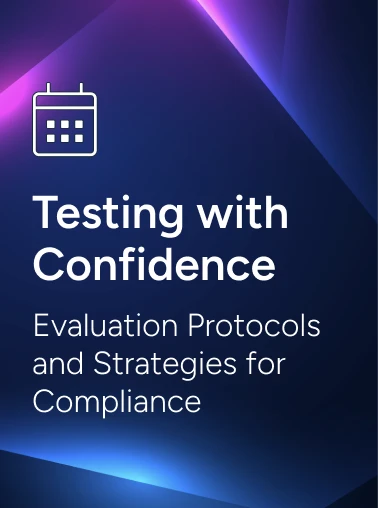Most laboratory tests are manufactured and/or managed through commercial operations, however, there are an increasing number of tests developed by independent laboratories for complex or highly specialized needs that cannot be addressed with commercially available products.
Since the FDA Final Rule on Laboratory Developed Tests was published on 06 May 2024, there has been a great deal of discussion around the interpretation and implications of the new oversight. The Final Rule declares the FDA’s authority to regulate LDTs as medical devices under the Food, Drug, and Cosmetic Act (FDCA) and phases out the discretionary enforcement that has been in place since the law was first enacted in 1976.
This development has created uncertainty for many in the laboratory community. For 60 years CLSI has served as a trusted resource for laboratories, and we're here for them now – with the guidance, tools, and resources to ensure they are prepared.
Laboratory Developed Tests

Navigating New Regulation

Read a letter from CLSI's CEO, Dr. Barb Jones, about the recent FDA Final Rule on the regulation of Laboratory Developed Tests.
LDT Advisory Group
The LDT Final Rule Advisory Group was established to provide strategic input regarding CLSI’s organizational response to the FDA ruling and related regulatory changes. The group also consults on CLSI product development to assist laboratories with implementation of the Final Rule, communications strategy related to the FDA Final Rule, and the identification of related issues, challenges, questions, and concerns within the laboratory community. See the esteemed panel of advisors serving on this LDT Advisory Group.
Testing with Confidence: Evaluation Protocols and Strategies for Compliance
CLSI hosted an exciting NEW half-day virtual training event focused on evaluation readiness.
Featuring a guest keynote talk with Eva Temkin from Arnold & Porter, "The Changing Regulatory Environment: What it Means for LDTs, IVDs, and Diagnostic Innovation and Practice," plus applied learning sessions demonstrating foundational protocols and reporting requirements, and panel discussions with industry and regulatory leaders, this event is designed for both commercial manufacturers and developers of laboratory tests to “level up” their evaluation readiness.
Don't miss your chance to be a part of this important forum!

LDT Related Guidelines
Find CLSI guidelines related to LDTs

Standards to Prepare for Stage 1 Requirements
Part of the webinar series dedicated to the stages of the FDA’s final rule on LDTs, this webinar focuses on stage 1 requirements, due to be implemented by May 2025.

Prepare your Lab with these CLSI Resources
Navigating the FDA Final Ruling
Here find answers to some commonly asked questions.
If by May 6, 2024 the assay was near the end of the development and validation phase (as opposed to already on the market as an LDT), it needs to be compliant with all relevant Stages 1-3 of the phaseout policy as they currently stand. The test also needs to be included in listing information.
Decisions to submit the test to FDA for premarket review, to submit the test to the NYS CLEP program, and/or to offer the test within a healthcare system as meeting an "unmet need" do not need to be made until November 2027 (Stage 4: high-risk LDTS) and/or May 2028 (Stage 5: moderate-risk and low-risk LDTS).
Laboratories should become familiar with the Stage 1 requirements for Medical Device Reporting (MDR), Complaint Files, and Corrections and Removals.
Many laboratories may already have MDR (non-conforming or adverse event) policies as part of the requirement for their health care organization, but these policies will need to be modified based on the LDT Final Rule requirements.
Laboratories now need to establish and use procedures for MDR and Corrections and Removals before 6 May 2025 because the FDA requires this of all manufacturers. Laboratories will also need to comply with the requirements for Complaint Files, specifically requirements for recordkeeping, and consider how to store all information received with a complaint about an assay. Established procedures will be needed to document a complaint and to evaluate if the compliant is a reportable event under MDR requirements.
Laboratories should also become familiar with Stage 2 requirements, particularly labeling requirements. This is essentially the information included in a package insert, so reviewing package inserts for tests already approved may be helpful in determining what the FDA requires.
For registration and device listing, laboratories should identify which LDTs are considered modifications of FDA-cleared devices.
An LDT created using Research Use Only (RUO) reagents that was on the market before May 6, 2024 will likely fall under the discretionary policy category.
Although under enforcement discretion, these tests will still need to meet the Stage 1 and Stage 2 requirements. It is important to note that -- with the exception of a few specific tests where complete enforcement discretion will continue and exempt them from all requirements -- all LDTs that laboratories continue to market after May 6, 2024 will need to meet Stage 1 and Stage 2 requirements, even if they fall into one of the enforcement discretion policy categories.
By the FDA's description, the laboratory creating and offering the LDT is the "manufacturer." An LDT can be any configuration used as a test that is not FDA-cleared or FDA-approved. Therefore, combining the reagents, instruments, or components and running them in a way that is not FDA-cleared or -approved (i.e., off-label) qualifies the test as an LDT and the Final Rule generally applies.
We recommend referring to the FDA's published resources for specific guidance (including information on categories of enforcement discretion), as well as consulting with a regulatory expert and the FDA for recommendations for your specific test and determining whether it is considered an LDT.
It is important to think broadly and consider the needs of all potential stakeholders that may interface with the test when listing LDT design inputs. These stakeholders may include patients, clinicians, end user laboratories, bioengineering departments, hospital administrators, payors, etc.
Marketing needs should also be included. The FDA emphasized the importance of marketing materials for LDTs, so laboratories should ensure these materials are tightly controlled. The marketing and communications teams need to be synchronized with the laboratory developing the LDT to ensure that claims are not made for the test that the laboratory cannot support.
It is important to keep thorough documentation of any changes made to an LDT. However, consider whether the LDT falls under one of the enforcement discretion policies, because some of those would not necessarily require submission to the FDA if certain changes are made.
Stage 3 under the LDT Final rule provides guidance on modifications to FDA-cleared or -approved kits and modifications to a laboratory's LDT currently marketed before May 6, 2024.
Modifications like changing a major component (eg, adding or removing a significant reagent), changing the intended use, or adding new technology like automation or artificial intelligence, would likely prompt an FDA submission.
Note: The content of CLSI’s FAQ is for informational purposes and is not intended as guidance or legal advice for complying with FDA regulations. Laboratory professionals should consult with regulatory affairs experts and/or legal counsel for guidance on complying with FDA requirements. Laboratories should also consult with the FDA for guidance about specific LDTs and are referred to the FDA’s Laboratory Developed Tests webpage.

Latest LDT Insights
Sign Up for our Newsletter
You'll receive the latest updates on new standards, guidelines, and educational resources, as well as expert insights to help enhance your laboratory's performance and compliance.